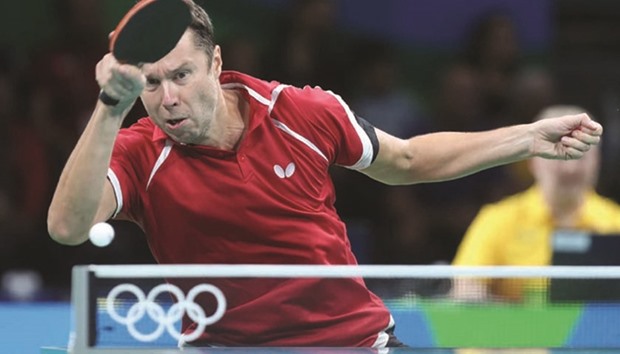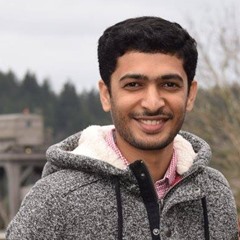Samsonov has been ranked among the world’s top 10 for much of the last 20 years
For Vladimir Samsonov, age is just a number. At 40, the table tennis star from Belarus is the oldest man on the circuit but quite clearly the exuberant of the lot.
In a sport, where Chinese have dominated at every level, from Olympics to World Championships to Tour level in the last three decades, the former World No. 1 Samsonov has carved a place for himself. He has been ranked among the world’s top 10 for much of the last 20 years, and also holds the distinction with most ITTF ProTour titles — a whopping 26.
In Doha for the season-ending ITTF World Tour Grand Finals, Samsonov is one of the season’s top 16 performers invited for the lucrative tournament, which starts today at the Ali bin Hamad al-Attiyah arena.
In his own words, 2016 has been an interesting year for Samsonov. He almost realised a long-cherished dream at the Rio Games, when he was at the doorstep of winning a medal, only to lose in the bronze medal play-off to Japan’s Jun Mizutani. But that hasn’t stopped him from dreaming as he chases his first World Tour Grand Finals crown in Doha.
“It has been an interesting year, with so many positive things happening for me,” said Samsonov.
“I started the year really well. I was second in the German Open. I have played quite well for the rest of the year. At the Rio Olympics, I reached the semi-finals for the first time. It was my sixth Olympics and it was the first time I had managed to reach the last four. It was really special, I played some crazy matches, especially in the quarter-finals but I suffered an injury in that match,” he added.
As fate would have it, the Belarusian suffered a serious rib injury during his quarter-final win over Dimitrij Ovtcharov of Germany. He struggled to move freely, which severely hampered his chances of beating his semi-final opponent, China’s Zhang Jike.
“I fell and damaged my ribs in the quarters. Though I won that match, I had problems to continue. Of course beating Zhang is always tough but after my injury I couldn’t play a strong forehand top spin. I had to change something, tactically I had to play a bit slower and more passively,” said Samsonov.
He also failed to recover in time for the bronze medal play-off, leaving his dream in tatters. From the 1996 to the 2012 Olympic Games, he has fallen at either the fourth round or the quarter-final hurdles, going the distance in each match only to lose in the deciding game. After six straight Olympics, the medal he most covets still eludes him.
Not one to look back, Samsonov has not ruled out playing at his seventh Olympics, in Tokyo in four years’ time. “I want to win an Olympic medal. One way it was very disappointing not to win a medal. Few times I was very close to reaching the semi-finals, and this time I did qualify. On the other hand, if I had won an Olympic medal, I wouldn’t have played for such a long time. There are two sides to it,” said Samsonov.
On the tour, he has been asked many times about his long playing career and Samsonov credited his family for the support.
“There are many things that matter. My family is very important to me. My wife and children give me a lot of positive energy. Of course, I love playing table tennis. There are some goals I have not achieved yet. You also have to be lucky, meeting the right people at the right time,” said Samsonov, the father of two sons aged 15 and 10.
In Doha, first up for the Belarusian is Yuto Muramatsu of Japan, with a clash against No. 3 three Xu Xin of China a likely prospect in the quarter-finals. Samsonov knows he will have to be at his best to finish the year on a high.
“Only top players are playing here and everyone is difficult to beat. I won against Muramatsu in the European league earlier this year. But it’s a different competition, so I should not let my guard down here.
“Against Xu Xin, it’s been a long time since I won against him. It was in 2012. But after that I played him in the quarters last year and it was a close match. I lost 4-2 but I was leading in the sixth set 10-7. Of course now I have to concentrate in the first round then will see what happens,” Samsonov said.
Ever since he took the game, table tennis has evolved a lot. Balls, for one thing, have become bigger in a bid to slow the game down and make it more spectator-friendly. They are now made using plastic instead of celluloid, while games are played to 11 points instead of 21 points.
The sport now favours aggressive players and required players like Samsonov, who has a more passive style, to adjust quite a bit. But it’s the never-give-up attitude that has helped the now 40-year-old not just survive but also shine amongst the competition. Age is indeed a number.

Former World No. 1 Vladimir Samsonov of Belarus has played in six straight Olympics, from 1996 to 2016, but the medal he most covets still eludes him.

